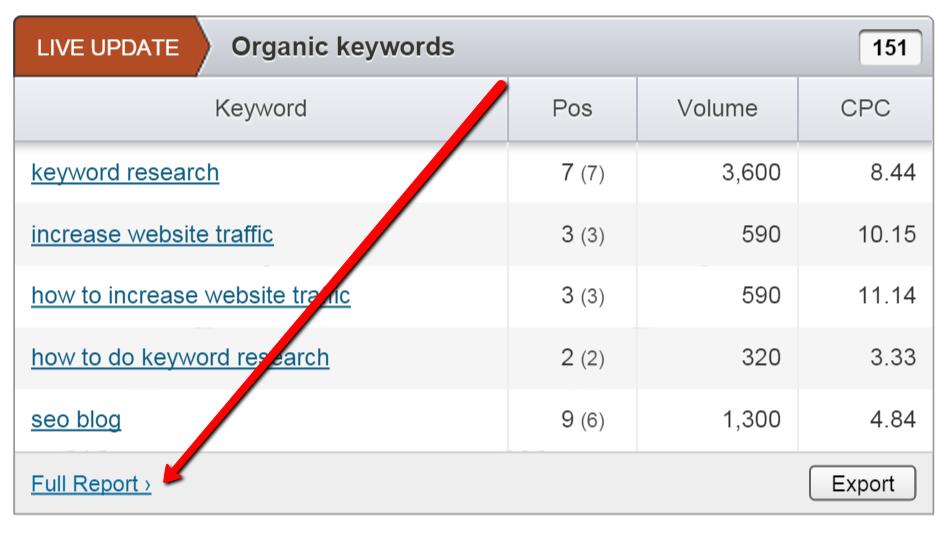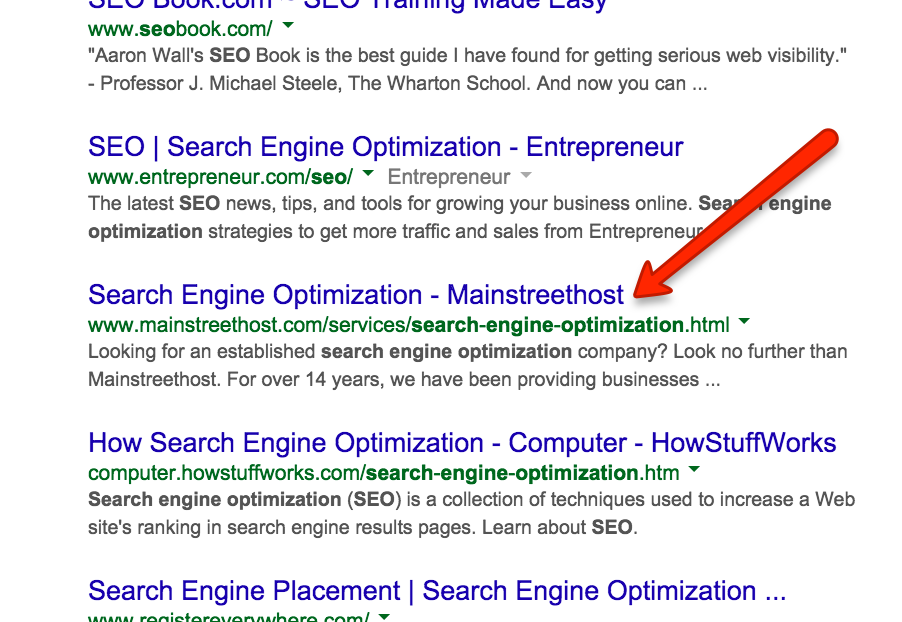Portions of this post are from lesson one of Nick's course, Master Keyword Research in 7 Days. He will join SEMrush on February 12 for a free webinar, “Competitor Keyword Research for SEO.” Webinar attendees can save 50% off Nick's comprehensive keyword training course, and one lucky attendee will win the entire seven-part course. Learn more about the webinar after the jump!
I want to introduce a concept that is constantly overlooked: the nuances between doing research for new websites versus existing websites.
The difference between the two is actually much greater than you may have realized; existing websites provide the opportunity to analyze existing directional data, whereas new websites require a much greater front-load of competitor research.
I feel like this distinction is not given the attention it deserves and all of the big publications don’t speak to how to properly approach each scenario for maximum impact.
I’m all about deriving value from existing assets, so I’m going to start with how to approach doing keyword research for existing websites and then move onto new websites.
Starting Keyword Research for an Existing Website
When performing keyword research for an existing website you have a few beacons of intelligence that offer you some light on which path to take:
Analytics data Rankings data Contextual dataEach of these data sources offers its own unique value when used to start the keyword research process.
Using Analytics Data
For the first, assuming you have been using Google Analytics, Clicky or some other 3rd party analytics platform to capture and record your traffic data, you can look back over the previous 12 months to see what sent you 1) the highest volume of traffic, and 2) the most valuable traffic (the visits that created conversions).
Using Ranking Data
Looking at what you’ve both 1) historically ranked for as well as 2) what you are currently ranking for can provide immediate visibility into where there’s immediate opportunity.
Grabbing Your Rankings Data from Semrush
Once you’re logged in, enter your website URL into the top field:

Then scroll down to the “Organic Keywords” sections and click on the “Full Report” link:

That will bring you to the organic overview screen, which you can verify by looking back at the URL field up top, which should say your domain followed by (by organic).
Within this view you will notice a large table underneath the rest of the shorter tables labeled “Organic keywords 1 — x” with x being the number of rankings your current website has. On the far right side of this table, at the very top, you will see a button to “Export:”

Click that button and choose Excel:

Once your file has finished downloading, crack it open — now it’s time to do a bit of formatting.
I’m going to run through the intuitive, straight-forward pieces without visual aids so I don’t have to wad this email full of images, but for anything even slightly unintuitive I’ll be using them.
Start by selecting the first row, your header row, by clicking the #1 on the top left side.
Then turn on Filters by clicking Data > Filter:

Click the “Search Volume” column header and select “From largest to smallest:”

You should now have a list of all of your existing rankings sorted by highest keyword search volume.
Now we’re going to make it a bit easier to visually scan this file for opportunities, so head over to Column B (Position) and select the column, by clicking the B:

From the top visual menu, select Home > Conditional Formatting > Color Scales > Then the second option from the left (Red — Yellow — Green Color Scale):

You now have a visual guide highlighting your largest traffic opportunities from SEO; the yellow to red highlighted cells closer to the top are the keywords with the highest monthly search volume and the lowest (but existing) rankings.
Create a new sheet in your Excel file; call it “low hanging fruit,” or “opportunities,” or “existing rankings” — something obvious.
Now grab each of these rows, by clicking on the Row number and then copy and paste each of these individually into your new sheet. Don’t forget to also copy and paste the column headers into the top row so all of this data makes sense.
You now have a shortlist of existing rankings (with traffic) that you should be targeting.
Approaching Keyword Research for a New Website
Back to my opening points for a moment; approaching keyword research for a brand new website is very different from having all of the data above at your fingertips to jump start your process.
You essentially are starting with a dollar and a dream.
What I mean specifically is you really don’t know what you need to be ranking for or how you will fair for terms important to your business; all you have is your beliefs.
So that’s where we’re going to start.
Take what you believe to be the best root keyword for your new website, and head over to Google to help us answer some questions. What you are specifically looking for is the following:
Does this website offer my product or service, or one closely related to it? Is the content on this page relevant to my audience? What other words are being used in this context?Use Your Ranking Barometer
Here is where you need to use some common sense. You are looking for websites that are in your wheelhouse; specifically sites that are not in the Alexa 1000. Or in other words, websites you might actually be able to outrank.
Don’t pay attention to tier-one publications like national newspapers, Wikipedia or major media portals like Yahoo! Answers, Quora, Forbes, Inc., etc.
You are on the hunt for a webpage (more specifically a URL) that you can use to steal intelligence.
For the purposes of this example I picked "search engine optimization." Please note this is actually not a great keyword as the intent is informational (we’ll cover that in a later lesson) and the competition is almost purely reference, so all evergreen. But I think it will help to get my point across.
As I scan the SERP I see mostly storm clouds that I don’t want to go near: Wikipedia, Google.com, Search Engine Land, Search Engine Watch, etc. *But* there is a glimmer of hope, I see an agency site, mainstreethost.com

That’s going to be our first mole; grab the URL and save it somewhere for reference, and let's keep going.
Take A Lead From The Leaders
There are already websites leading the pack across all the major industries — so instead of inventing the wheel, why not stand on the shoulders of giants.
Use tools like SimilarWeb's Global Category Ranks to find the global leaders in any major website category — and instead of trying to re-invent the wheel, start with the keywords already being used by those who are dominating your space.
Learn more in my upcoming webinar!
Join Nick Eubanks and Semrush for "Competitor Keyword Research for SEO." This free webinar takes place next Thursday, February 12, at 12 p.m. (EST). Attendees will learn how to excavate your competitor's keywords for gems, evaluate the results to select highly productive keywords, export and sort the results and what to do with them for maximum effect.
As an exclusive offer, webinar attendees can save 50% off Nick's comprehensive keyword training course and one lucky attendee will win the entire seven-part course for FREE in a random drawing. Attendees will also receive a FREE trial of SEMrush to work with their new knowledge. Register now!
Innovative SEO services
SEO is a patience game; no secret there. We`ll work with you to develop a Search strategy focused on producing increased traffic rankings in as early as 3-months.
A proven Allinclusive. SEO services for measuring, executing, and optimizing for Search Engine success. We say what we do and do what we say.
Our company as Semrush Agency Partner has designed a search engine optimization service that is both ethical and result-driven. We use the latest tools, strategies, and trends to help you move up in the search engines for the right keywords to get noticed by the right audience.
Today, you can schedule a Discovery call with us about your company needs.
Source:





![How to Find Low-Competition Keywords with Semrush [Super Easy]](https://allinclusive.agency/uploads/images/how-to-find-low-competition-keywords-with-semrush-super-easy.svg)